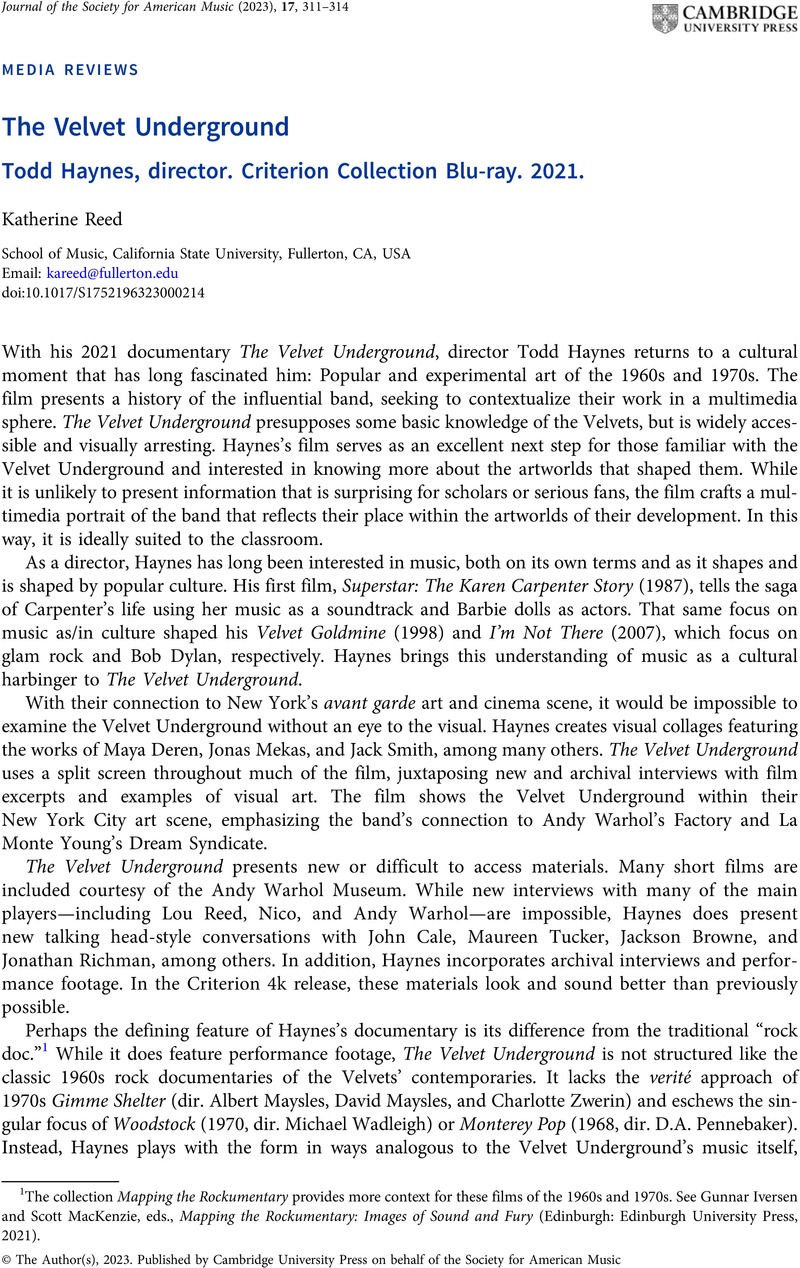No CrossRef data available.
Published online by Cambridge University Press: 06 September 2023

1 The collection Mapping the Rockumentary provides more context for these films of the 1960s and 1970s. See Iversen, Gunnar and MacKenzie, Scott, eds., Mapping the Rockumentary: Images of Sound and Fury (Edinburgh: Edinburgh University Press, 2021)Google Scholar.
2 For more on Moonage Daydream and rock doc form, see Lisa Perrott, “Moonage Daydream: Brilliant Bowie Film Take Big Risks to Create Something Truly New,” The Conversation, September 13, 2022, https://theconversation.com/moonage-daydream-brilliant-bowie-film-takes-big-risks-to-create-something-truly-new-190347, accessed March 1, 2023.
3 The Velvet Underground: What Goes On, edited by Albiez, Sean and Pattie, David (New York: Bloomsbury Academic, 2022)CrossRefGoogle Scholar.